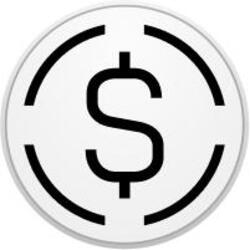Jakub Porzycki | Nurphoto | Getty Images
The imminent U.S. tariffs are likely to deal a significant blow to China’s already-faltering economy, reinforcing calls for more forceful stimulus measures to bolster the country’s growth.
U.S. President Donald Trump on Saturday followed through on a threat made after his presidential victory, imposing 10% tariffs on Chinese goods, starting Tuesday, over Beijing’s alleged failure to prevent the flow fentanyl into the U.S.
The blanket 10% tariffs will be levied on top of the existing tariffs of up to 25% that Trump had imposed on Chinese goods during his first presidency.
The additional 10% tariffs would reduce China’s real GDP growth by 50 basis points this year, economists at Goldman Sachs said in a report Monday.
The investment bank expects China’s real GDP growth to slow to 4.5% this year while domestic price growth remains under pressure due to weak demand, with consumer inflation expected to rise just 0.4% in 2025. The consumer price inflation barely grew last year, rising 0.2% year on year. Higher U.S. tariffs could further strain domestic prices as external demand for Chinese goods weaken.
As Trump started his second term, he ordered his administration to investigate Beijing’s compliance with a trade deal struck during his first presidency in 2020. The final result of the assessment will be delivered to Trump by April 1, potentially setting the stage for further tariff actions, economists said.
“Clearly the 10% tariff hike came in quickly and lower, but there remains a lot of uncertainty on the timing and scale of additional tariffs on China,” Wang Tao, chief China economist at UBS Investment Bank told CNBC on Monday.
“We are not revising our 2025 baseline forecast of 4.0% GDP growth for China,” she said, factoring in additional U.S. tariffs of 60% on a quarter of China’s exports and greater policy support from Beijing.
Currency defense
Chinese yuan plunged 0.60% to 7.3631 against the greenback in offshore trading Monday, before trimming losses, according to LSEG data. The offshore yuan has lost 3.7% since Trump’s presidential victory in early November.
Markets in mainland China were shut for the Lunar New Year and will resume trading on Wednesday.
A primary tool used by the People’s Bank of China to manage the currency has been the daily reference rate — the onshore yuan is allowed to trade only within a 2% range of this reference rate.
The spot level where PBOC sets the reference rate on Wednesday will be a key indicator to gauge Beijing’s reaction to the tariff hikes, said Ding Shuang, chief economist of Greater China and North Asia at Standard Chartered Bank.
“We expect China to mainly rely on stimulus to boost domestic demand, instead of large devaluation, to offset the tariff impact,” Shuang added.
Since last year, the central bank has been capping the exchange rate guidance at under 7.20 per dollar, a move seen as a signal of its determination to defend the currency.
As the tariff rate climbs, the central bank could allow a “gradual drift higher” in the onshore yuan between 7.40 and 7.50 against the U.S. dollar, Goldman Sachs said, expecting the PBOC to prioritize FX stability ahead of monetary policy easing.
The central bank could “skip” other easing measures like cutting the amount of cash that banks must hold as reserves, while seeking to manage liquidity via open market reverse repurchase operations, according to Goldman Sachs.
Stimulus eyed
China was able to “effectively bypass” the hefty tariffs during Trump’s first term, but it is “not so easy to escape the impact of tariffs this time around,” Barclays said in a note on Monday.
Policy rooms to maneuver exchange rate depreciation, large-scale trade diversion and reduction in exporters’ profit margins have all “diminished significantly,” the bank said.
As an external trade war looms, economists expect more fiscal spending to offset China’s deflationary pressures and boost consumer spending.
While the economy hit the growth target of 5.0% last year, it struggled to emerge from a real estate collapse and weak consumer and business confidence, leaving exports as a key driver of growth. Even in 2023, exports contributed almost 20% of the country’s GDP, according to World Bank data.

Pending tit-for-tat
China’s Commerce Ministry said Sunday that it would challenge Trump’s tariff decision at the World Trade Organization, condemning the sweeping tariffs as a “serious violation of international trade rules.”
While vowing to “take corresponding countermeasures to firmly safeguard its own rights and interests.” China’s statement, however, stopped short of announcing any specific plans for tariffs.
Filing a lawsuit with the WTO has largely been a symbolic move that Beijing has taken against tariffs on Chinese-made electric vehicles by the European Union too. In recent weeks, Chinese officials have reiterated that Beijing believes there is no winner in a trade war.
Beijing’s response so far has appeared “mild to start,” said Lynn Song, chief economist at LNG, but he cautioned some Chinese policymakers may still be on holiday, hence delaying the announcement of any concrete retaliation until they return to work on Feb. 5.
“If pushed into a corner, China’s retaliation could be stronger than what most expect,” Song added, suggesting Beijing has a range of tools to respond, including intensifying export controls or bans on rare earths, and measures targeted at American conglomerates with large reliance on the Chinese market.
Trump’s Saturday executive orders included additional 25% tariffs on goods from Mexico, one of China’s main export rerouting channels.
That may prompt China to shift exports to ASEAN and Latin American countries, while boosting trade ties with these nations to help offset “a more protectionist U.S.,” Song added.











































